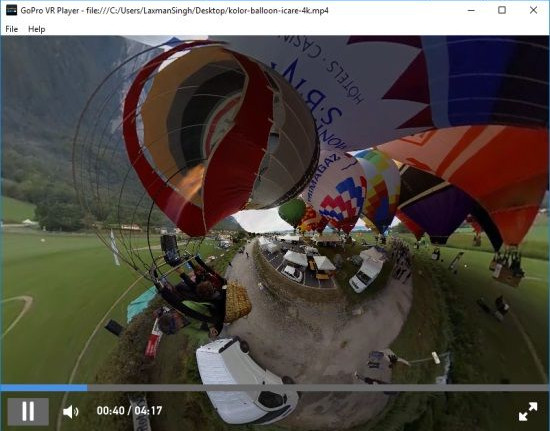


While this is the simplest solution for PC users, it introduces an extra transcoding step to H.264 (after the initial H.265 recording), and I frequently encountered an issue where there was a black hexagon in the middle of the stitched image.Īctivating Automatic Angle Compensation in the Preferences->Editing panel gets around this bug, while trying to stabilize your footage to some degree. (C:\Users\\Documents\CyberLink\ActionDirector\1.0\360) is where they should be located by default. Instead of exporting from that application, I pull the temp files that it generates on media import, and use them in Premiere. Upon import, the software automatically processes the original stills and video into equirectangular 2:1 H.264 files. You can download the original version here, but will need the activation code that came with the camera in order to use it. One option is to use the application Samsung packages with the camera: Action Director 360.

In the case of the Gear 360, the dual spherical image file recorded by the camera is not directly usable in most applications and needs to be processed to generate a single equirectangular projection, stitching the images from both cameras into a single continuous view. Once our VR editing system is ready to go, we need to look at the footage we have. Adobe is expected to integrate much of this functionality into the next release of Premiere, which should remove the need for most of the current plugins and increase the overall functionality. I found this to have slightly better playback performance, but fewer options (no UI projection, for example).
#GOPRO VR PLAYER ENCODE FOR FREE#
Another option is to use the GoPro VR Player plugin to send the Adobe Transmit output to the Rift, which can be downloaded for free here (use the 3.0 version or above). Skybox can project the Adobe UI to the Rift, as well as the output, so you could leave the headset on when making adjustments, but I have not found that to be as useful as I had hoped.


 0 kommentar(er)
0 kommentar(er)
